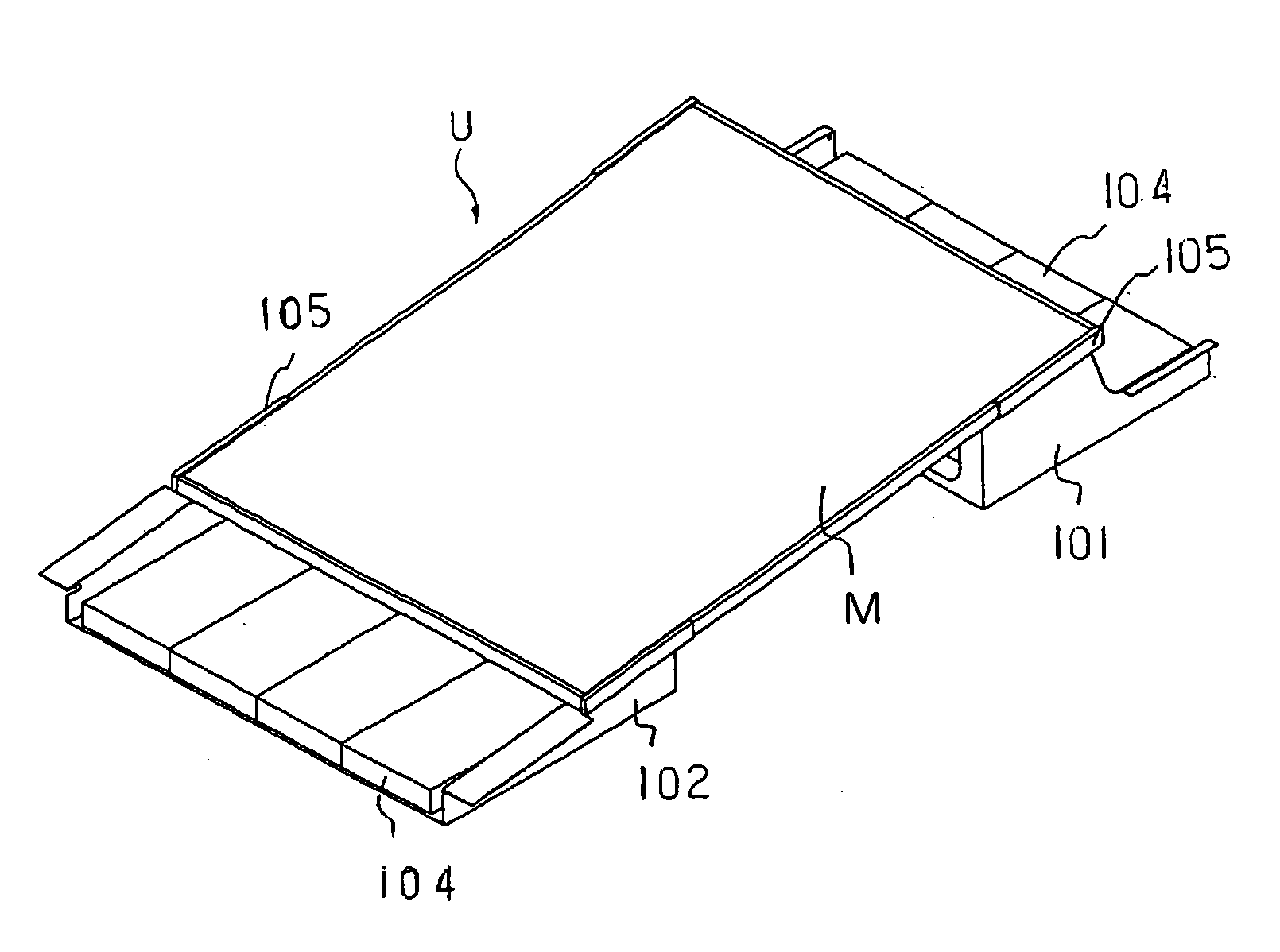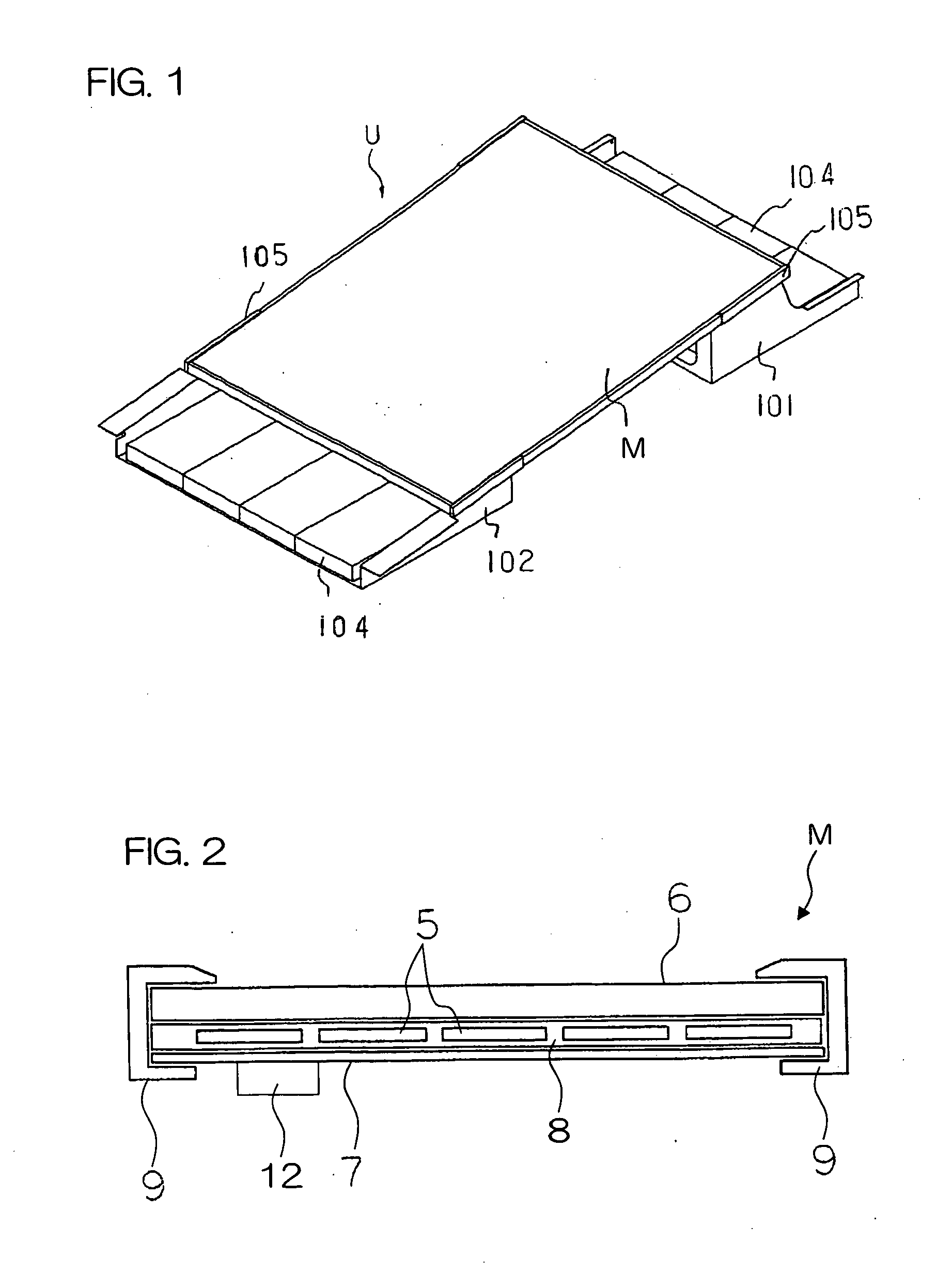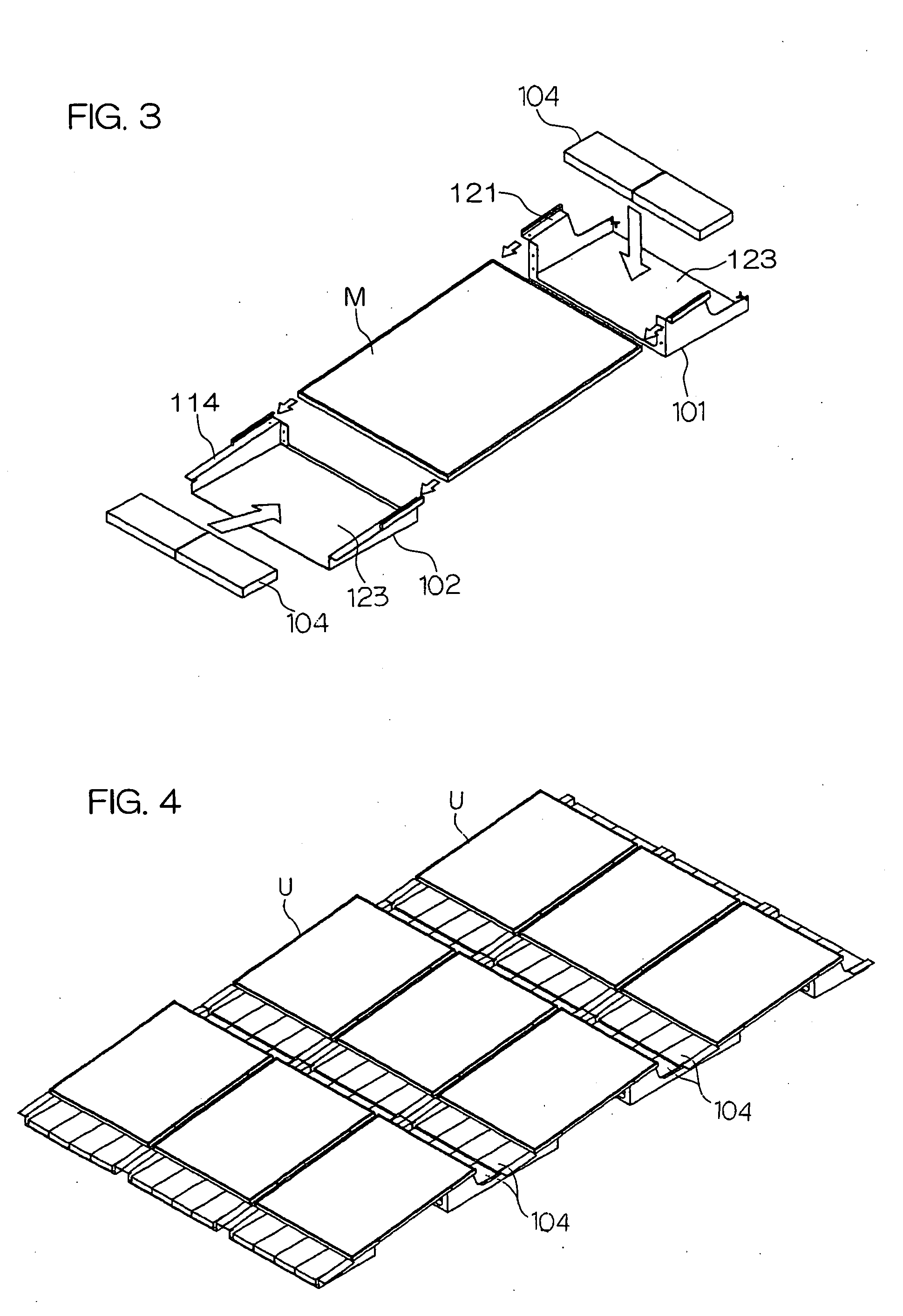Photovoltaic power generation system
- Summary
- Abstract
- Description
- Claims
- Application Information
AI Technical Summary
Benefits of technology
Problems solved by technology
Method used
Image
Examples
Example
[0121] A photovoltaic power generation system according to one embodiment of the invention will hereinbelow be described in details with reference to the accompanying schematic drawings.
[0122]FIG. 1 is a perspective view showing a solar cell unit U.
[0123] The solar cell unit U comprises: a solar cell module M, an upper side rack 101 and a lower side rack 102, the upper and lower side racks serving to support the solar cell module M in an inclined position. The upper side rack 101 is equivalent to a “first rack”, whereas the lower side rack 102 is equivalent to a “second rack”.
[0124] The solar cell unit further employs a weight 104 for preventing the upper side rack 101 and the lower side rack 102 from being displaced from their installation places.
[0125] The weight 104 is, for example, a concrete block or a metal block such as of iron. FIG. 1 illustrates an example using four blocks on each side. However, one piece of the weight itself may be made heavier to reduce the division ...
PUM
 Login to View More
Login to View More Abstract
Description
Claims
Application Information
 Login to View More
Login to View More - R&D
- Intellectual Property
- Life Sciences
- Materials
- Tech Scout
- Unparalleled Data Quality
- Higher Quality Content
- 60% Fewer Hallucinations
Browse by: Latest US Patents, China's latest patents, Technical Efficacy Thesaurus, Application Domain, Technology Topic, Popular Technical Reports.
© 2025 PatSnap. All rights reserved.Legal|Privacy policy|Modern Slavery Act Transparency Statement|Sitemap|About US| Contact US: help@patsnap.com



